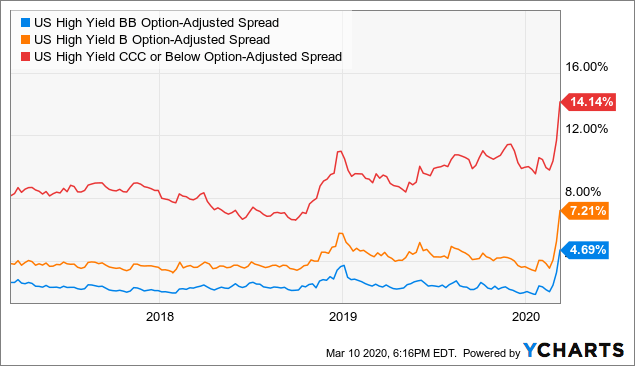
Before you begin trading forex, you must be familiar with the basics. This article will discuss everything, from Intraday strategy training to finding the best Currency pairs to trade with small amounts of money. It will also cover trading fees, spreads, and how you can create a risk management program. This article should give you a solid knowledge of day trading. By following these simple tips, you can be confident in your abilities to make money on the forex market.
Training in intraday strategy
You need to be disciplined when learning forex day trading strategies. Forex traders must keep an eye on technical indicators and market sentiment in order to spot opportunities and predict price changes. You can make a lot of money trading with just a few chips. However, you have to be aware of the risks associated with each trade. Intraday trades are best when prices are monitored and you don't act on emotions. This article will help you to succeed.
Before beginning your own forex trading career, you should first determine your risk tolerance. Your trading decisions will be affected greatly by your risk tolerance. A trading strategy that suits your risk level is based on this factor. As such, trading strategies that are short-term can be more risky and require more trades than long-term. If you want to minimize risk, trading simulators and backtesting can be a great way to test new strategies.

Currency pairs suitable to trade with a small amount of money
The US dollar and Swiss franc are two currency pairs that beginners will find useful. Although Switzerland does not have a large economy it is still a popular currency pair. This is due to its stable government and financial system that is resilient to economic uncertainty. Although the pair isn’t as liquid or popular as other major currencies, it is still a popular choice for traders. This pair is not recommended if you have very little money.
The US dollar and Japanese yen are another pair that is low in volatility and high in liquidity. The Asian market sees the US dollar and yen traded often. The Bank of Japan as well as the US Federal Reserve set the exchange rates for these two currencies. The Australian export value of commodities is one of the other factors that affect the currency's cost. As with most currency pairs, choosing the right pair for you and your trading experience will be much easier if you choose the right pair.
Spreads and trading fees
Day traders in the stock exchange typically buy options, stocks, and futures contracts. You can also trade in currency, commodities, the interest rate and futures on stock market indexes. Scalping is an intraday trading strategy that allows day traders to trade at different times throughout the day. The difference in the ask and bid prices determines the commission they pay. These fees may reduce the amount you receive in returns.
The transaction costs associated with day trading are high. These costs include trading charges, fees, taxes, as well as trading commissions. To purchase or sell security, you must pay these fees. These fees are part day trading. Day traders should spend the time to fully understand the information before making an investment. By comparing day trading with other forms of investing, it's clear that the cost structure is more expensive than most investors would like it to be.

How to create a risk management plan
A proper risk management strategy for day trading on forex involves identifying and quantifying your goals. A realistic goal will help you avoid frustration, and it will make trading easier. You can also break down your goals into smaller pieces to make them more achievable and less stressful to achieve. A risk management strategy can be used to minimize your losses and maximize your profits. Once you have defined your goals, you can put together a plan to get there.
It is crucial to have a risk management strategy when day trading Forex. Even though a winning trading strategy is vital, too much risk in any one trade can seriously impact the overall value of your system. You can lower your risk exposure and increase your trading profits by incorporating risk management strategies in your strategy. We recommend you download our risk management PDF. This will explain the process in plain English.
FAQ
What is a mutual-fund?
Mutual funds consist of pools of money investing in securities. Mutual funds offer diversification and allow for all types investments to be represented. This reduces risk.
Mutual funds are managed by professional managers who look after the fund's investment decisions. Some funds also allow investors to manage their own portfolios.
Mutual funds are often preferred over individual stocks as they are easier to comprehend and less risky.
What is the difference?
Brokers specialize in helping people and businesses sell and buy stocks and other securities. They handle all paperwork.
Financial advisors have a wealth of knowledge in the area of personal finances. Financial advisors use their knowledge to help clients plan and prepare for financial emergencies and reach their financial goals.
Banks, insurance companies or other institutions might employ financial advisors. They can also be independent, working as fee-only professionals.
Take classes in accounting, marketing, and finance if you're looking to get a job in the financial industry. Additionally, you will need to be familiar with the different types and investment options available.
How can people lose their money in the stock exchange?
The stock exchange is not a place you can make money selling high and buying cheap. It's a place where you lose money by buying high and selling low.
The stock market is an arena for people who are willing to take on risks. They are willing to sell stocks when they believe they are too expensive and buy stocks at a price they don't think is fair.
They hope to gain from the ups and downs of the market. If they aren't careful, they might lose all of their money.
Who can trade on the stock exchange?
Everyone. However, not everyone is equal in this world. Some people are more skilled and knowledgeable than others. So they should be rewarded.
Other factors also play a role in whether or not someone is successful at trading stocks. If you don't understand financial reports, you won’t be able take any decisions.
This is why you should learn how to read reports. Each number must be understood. You should be able understand and interpret each number correctly.
If you do this, you'll be able to spot trends and patterns in the data. This will enable you to make informed decisions about when to purchase and sell shares.
If you're lucky enough you might be able make a living doing this.
How does the stock market work?
When you buy a share of stock, you are buying ownership rights to part of the company. The company has some rights that a shareholder can exercise. He/she may vote on major policies or resolutions. The company can be sued for damages. And he/she can sue the company for breach of contract.
A company cannot issue more shares that its total assets minus liabilities. It is known as capital adequacy.
Companies with high capital adequacy rates are considered safe. Low ratios make it risky to invest in.
How do you choose the right investment company for me?
A good investment manager will offer competitive fees, top-quality management and a diverse portfolio. Fees vary depending on what security you have in your account. Some companies charge nothing for holding cash while others charge an annual flat fee, regardless of the amount you deposit. Others charge a percentage on your total assets.
You also need to know their performance history. You might not choose a company with a poor track-record. Companies with low net asset values (NAVs) or extremely volatile NAVs should be avoided.
Finally, you need to check their investment philosophy. In order to get higher returns, an investment company must be willing to take more risks. If they are not willing to take on risks, they might not be able achieve your expectations.
Statistics
- "If all of your money's in one stock, you could potentially lose 50% of it overnight," Moore says. (nerdwallet.com)
- Even if you find talent for trading stocks, allocating more than 10% of your portfolio to an individual stock can expose your savings to too much volatility. (nerdwallet.com)
- Our focus on Main Street investors reflects the fact that American households own $38 trillion worth of equities, more than 59 percent of the U.S. equity market either directly or indirectly through mutual funds, retirement accounts, and other investments. (sec.gov)
- The S&P 500 has grown about 10.5% per year since its establishment in the 1920s. (investopedia.com)
External Links
How To
How to Trade in Stock Market
Stock trading refers to the act of buying and selling stocks or bonds, commodities, currencies, derivatives, and other securities. Trading is a French word that means "buys and sells". Traders trade securities to make money. They do this by buying and selling them. It is one of oldest forms of financial investing.
There are many options for investing in the stock market. There are three basic types: active, passive and hybrid. Passive investors simply watch their investments grow. Actively traded traders try to find winning companies and earn money. Hybrid investors combine both of these approaches.
Index funds track broad indices, such as S&P 500 or Dow Jones Industrial Average. Passive investment is achieved through index funds. This is a popular way to diversify your portfolio without taking on any risk. You just sit back and let your investments work for you.
Active investing involves selecting companies and studying their performance. Active investors will analyze things like earnings growth rates, return on equity and debt ratios. They also consider cash flow, book, dividend payouts, management teams, share price history, as well as the potential for future growth. They then decide whether they will buy shares or not. If they feel the company is undervalued they will purchase shares in the hope that the price rises. On the other side, if the company is valued too high, they will wait until it drops before buying shares.
Hybrid investment combines elements of active and passive investing. One example is that you may want to select a fund which tracks many stocks, but you also want the option to choose from several companies. In this scenario, part of your portfolio would be put into a passively-managed fund, while the other part would go into a collection actively managed funds.